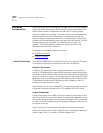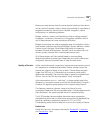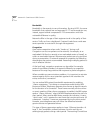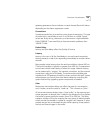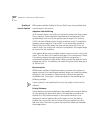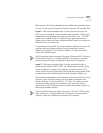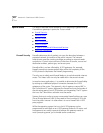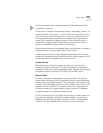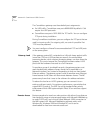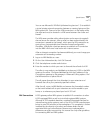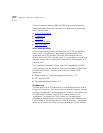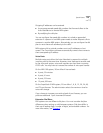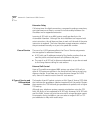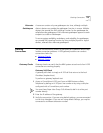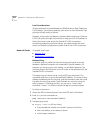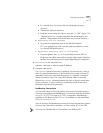
410 APPENDIX D: CONNEXTIONS H.323 GATEWAY
The ConneXtions gateway uses these default port assignments:
■ For UDP traffic, ConneXtions uses ports 8000-8099 by default. Calls
require four UDP ports each.
■ ConneXtions uses ports 1025-5000 for TCP traffic. You can configure
TCP ports during installation.
During ConneXtions installation, you can configure the TCP ports that are
used for incoming calls. For outgoing calls, no control is possible. Port
1720 must be preserved.
You must configure a firewall to accommodate both TCP and UDP ports
on the same system.
Gateway Load If the gateway system NIC is attached to a LAN with heavy packet traffic
(more than 700 non-H.323 packets per second), the extra address
processing burden, which requires processing power, can slow down the
gateway. This occurs because the ConneXtions software makes H.323
ports look like hardware line cards to a Call Processor.
To emulate a group of simulated line cards, the gateway system must
read the destination address of every frame that is presented to its
Network Interface Card, instead of responding to only one hard-coded
Ethernet address. The gateway system is able to examine every Ethernet
frame because its NIC does not discriminate between frames. The NIC
passes every frame that it sees to the software for address evaluation.
To reduce the load on an H.323 gateway, you can connect it to an
existing multi-port switch. For optimum performance, use switches that
support 802.1(p and q). The 802.1(p and q) standard offers priority
enhancement which NBX systems exploit. Most 3Com switches support
this feature.
Remote Access Business people who travel can make routine calls without long distance
line charges by using an internet-ready laptop with Microsoft NetMeeting
to make H.323 calls, and a Virtual Private Network (VPN) connection to
the NBX system LAN. Microsoft NetMeeting software works with
Windows 9x, Windows 2000 and Windows NT, and it can be
downloaded for free from www.microsoft.com.



